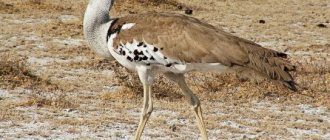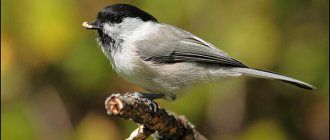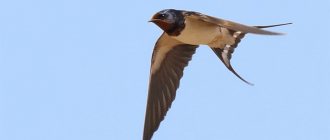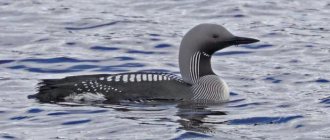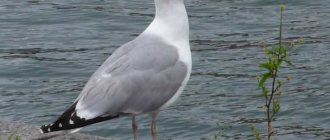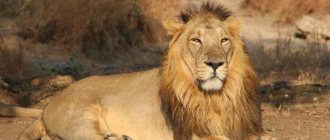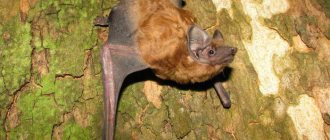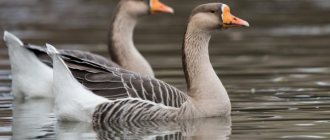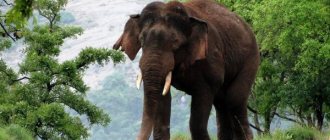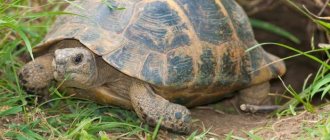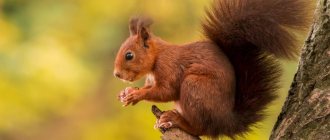The gray-brown, nondescript ones are sparrows, and the ones with a yellow belly are titmice, right? And then who is sitting in the feeder, brown with white “cheeks”? And that bird over there in the black cap? And the other one, with a funny crest? It turns out that even the most familiar birds to us can look completely different.
If you have already hung a homemade bird feeder outside your window, filled it with healthy food, and regularly look at your feathered guests with your whole family, then from time to time you may get “confused” even in the most ordinary bird species. That one over there seems to be a sparrow, but why is it so much darker than the others? But this one is apparently a titmouse, but why such an unusual color?
Because even sparrows and tits are, imagine, different! Why is this and how do they all differ from each other? Let's figure it out together.
Appearance
This small representative of the genus of the tit family has a body length of up to 12 centimeters and weighs only 15 grams. The upper part of the body is colored grayish-brown, which flows towards the bottom into a lighter shade. The sides of the bird have a more brownish tint. The color of the wings and tail is uniformly brown.
A notable feature of the black-headed chickadee is its characteristic head color. The entire area of the head up to the eye line is represented by a contrasting black cap with a shiny tint, which smoothly tapers to the base of the neck area. There is a small dark spot under the beak. The beak itself is black with a gray edging on the upper beak. The paws have a bluish-gray tint. You can distinguish a young chick from an adult bird by the coloring of its feathers. The chicks are painted in predominantly light shades, and the cap on the head is duller and more matte. Some representatives of the black-headed chickadee, which live in the western Caucasus, have a longer tail and a large number of gray tones in their plumage.
In appearance, the black-headed chickadee has many similarities with the brown-headed chickadee. The difference lies in a number of basic characteristics, namely the proportionality of the head and body, the color of the cap and the uniform brown color of the wings of the black-headed chickadee. Based on these basic characteristics, you can easily distinguish representatives of the chickadee genus.
Description of the bird
It belongs to the class of passerines, the bunting family, but looks larger than an ordinary sparrow. It has the status of a wintering bird. Its name comes from the word “punak” (Lapland).
It is sometimes classified as a member of the plantain family. Such birds are hardy and can live in various conditions. The Bunting is also called the “polar sparrow”.
What does it look like
The bird is small, elegant, 16 centimeters long, weighs about 30-40 grams. Its wingspan reaches more than thirty centimeters. The bird looks beautiful and immediately attracts attention. Most of her body is white, except for her head and mottled wings.
It has wide, pointed wings and a short, wide tail with a fork at the end. The bird's head is large and round. Her legs are black and short. The eyes are the same color. The beak is tall, shortened, and wide at the base. In behavior, the bird resembles an ordinary city sparrow. Likes to live in crowded places, closer to human habitation.
When mating season begins, males change the color of their backs and wings to black. This attracts the attention of females, who have browner plumage on their back and head.
In winter, birds acquire protective coloring on their backs and wings to match the color of the clearings in which they hide. Their beak turns yellow-brown. The breast and belly remain white at any time of the year.
The young Bunting has a grayish color. In flight, she looks like a snow sparrow. Her voice is ringing, high, similar to the song of the Lapland Plantain, but only sounds louder. When in danger, it makes sharp, piercing trills.
Varieties
There is a variety of this bird - the Bunting Cardinal. It is found more often in the Kaliningrad region. The bird's body length reaches 14 cm. The color during the mating season is blue-blue.
In autumn the color of the feathers is brown on the back and wings. Females and juveniles have a brown coloration on their backs. Their tail and throat are gray and their wings have white stripes.
Character and lifestyle
Bunting is a migratory bird. Its habitat is the northern latitudes of the subpolar Arctic. You can often find her on glaciers; she is not afraid of frost. Snow Bunting's life is spent surrounded by small flocks. He likes to settle in the Arctic tundra, this is due to the abundance of insects.
Often migrates across the frozen steppe plains following herds of reindeer. In winter, it feeds on seeds of forest-tundra plants and trees, moving from the Arctic coast to the taiga massifs.
What does it eat?
In winter, the bunting feeds on grains and seeds, frozen bush berries (viburnum, rowan). In summer, insects (flies, mosquitoes, dragonflies, larvae) are eaten.
Where does it live?
Its habitat is the vast territories of the North Eurasian and North American continents, the lands of Northern Europe. Prefers to live on the outskirts of forests with dense thickets of bushes, dead wood, and piles of rocks.
Reproduction
The female takes responsibility for building the nest, using available material (grass, moss, faded animal hair, fluff). Males arrive at the nesting site (in the North) before females and change the color of their plumage before the mating season.
These birds usually live in flocks, but split into pairs to breed. Nests are located in rocks, under roofs, in garbage, where, in their opinion, it will be safest. The main enemies of chicks are: jackal, arctic fox, coyote, owl, owl.
After construction is completed, females lay three to six yellow-gray eggs with brown spots. She can lay two clutches during the nesting season. The female incubates the clutch for about two weeks. Nesting begins around May. Both parents feed the chicks with insects.
In the fall, the grown cubs migrate deep into the mainland zone. They settle in the wide expanses of the Eurasian and American continents. The Bunting does not have the custom of remembering its previous nesting site. Each period she finds a new place to hatch chicks.
Natural enemies
The bunting is at the bottom of the food chain. Therefore, she has plenty of enemies, both on the ground and in the air. She escapes from them in the dense thickets of bushes in the front part of the forest, where she likes to live in the time preceding nesting.
| Winged predators | Terrestrial predators |
| Owls | Foxes |
| Peregrine Falcon | Ferrets |
| Gyrfalcons | Arctic foxes |
| Kestrel | Cat Manul |
Enemies of the canine family can destroy nests.
Wintering
The most common wintering place for Buntings is the subpolar forest taiga of the Eurasian and American continents. By winter, after molting, it becomes overgrown with thick underfur.
During the winter, it is not afraid of cold weather and often moves from place to place, being on the border of the movement of the Arctic cyclone. This property helps local northern residents predict weather changes by the appearance and disappearance of birds.
Habitat
The black-headed chickadee population covers the forest zone of Eurasia. An isolated subspecies of the black-headed chickadee inhabited the territory of the Caucasus. A small part of the population of these birds is located in Western Siberia. They prefer deciduous forests and thickets of poplars or bird cherry trees as habitats. They can settle in swampy lowlands. Some species are also found in dry gardens.
These birds lead a predominantly sedentary lifestyle, but can fly short distances.
Conservation status of the puffball
Powderfish is protected by the Berne Convention (Appendix II). The Convention defines measures for the conservation and protection of plant and animal species, as well as their natural habitats. This problem is relevant for species living on the territory of several European countries. In the case of puffballs, protective measures are applicable in areas where birds breed and migrate. Brown-headed chickadees, despite their large numbers and the formation of subspecies, are under threat due to massive deforestation and climate change.
Puffballs sensitive to global warming in Europe
This species is especially sensitive to global warming in Europe; wet winters with thaws affect the decline in bird numbers. Therefore, the survival of a common species becomes difficult when there are sudden changes in temperature. In addition, chickadees often exhibit nest parasitism - they throw their eggs into the nests of other bird species. This behavior is alarming and indicates that the species is experiencing threats in its habitat.
If you find an error, please select a piece of text and press Ctrl+Enter.
Nutrition
The diet of black-headed chickadees is very extensive and can include both small invertebrate insects and many plants. Most often, the bird prefers to eat various nuts, flowers and juicy fruits of many plants. If there is a birch or aspen in its habitat, it feeds on the sap of these trees. Black-headed chickadees themselves are very thrifty birds. From the end of summer, they actively search for food and hide it in various cracks and crevices.
Interesting facts about the bird
For a long time, the northern peoples (Chukchi, Eskimos) treated Punochka with great love. She is the hero of various fairy tales, songs, and fables. Local residents dressed up as her, imitating her habits, voice, and movements. This is how folk dances were born. In fairy tales, she was only a positive character (a hardworking woman and a caring mother).
Since ancient times, the northerners have also been able to determine changes in the weather based on the behavior of the Snow Bunting. For example, they believe that these birds bring spring on their wings. Their mass appearance is a characteristic of a warm year.
It is interesting that in 1888, polar explorer Nansen, having climbed with his companions to the highest peak of Greenland, found Bunochka there. This brought the travelers news of an imminent meeting with a settlement, which meant the end of the expedition.
Reproduction
The nesting period lasts from March to June. As a rule, the resulting pairs last throughout life. They prefer hollows of old trees or empty holes as places for laying eggs. The selected nest must be located at least 3 meters above the ground. It is mainly the female who searches for and arranges housing. In order to expand the territory of the selected nest, she plucks pieces of wood from it. Then it lays up to 10 eggs with distinctive red dots in a designated area. The incubation period lasts from 13 to 17 days. Both parents feed the hatched chicks. As a rule, little black-headed chickadees stay in the nest for a little less than a month and another week after the first flight.
Peculiarities
The voice of the black-headed chickadee is very diverse. His call is a sonorous “qi-qi-zhee-zhee” or a little sadder “pyuyu-piyuy.” Her singing is surprisingly sonorous and melodic. Also, a chickadee can utter a quick “sip, sizzle” with hoarse exclamations and metallic notes, or a drawn-out “tey-tey-tey”, meaning alarm. There is another whistling song - “sis-si-ris-si”.
A characteristic feature of this bird is the manner of staying only in pairs and a strong attachment to each other. In winter, ordinary mixed flocks in which small wintering birds gather, as a rule, one or two marsh chickadees can be found. They rarely live alone. Partners do not separate either in winter or autumn, even when they are in a flock of their relatives or join flocks of other tits.
The chickadee's lifestyle is sedentary and in winter it always stays near the nest.
